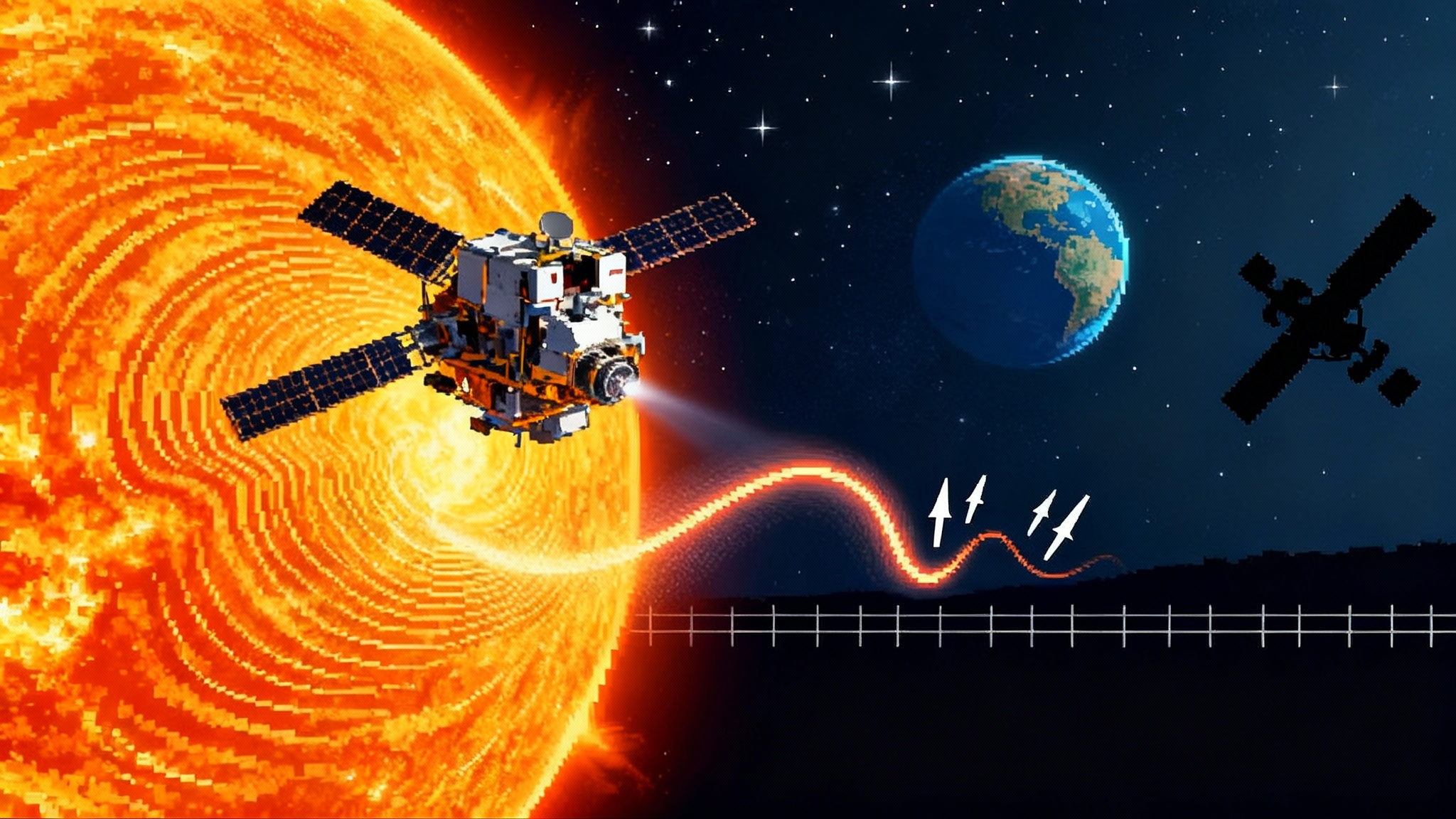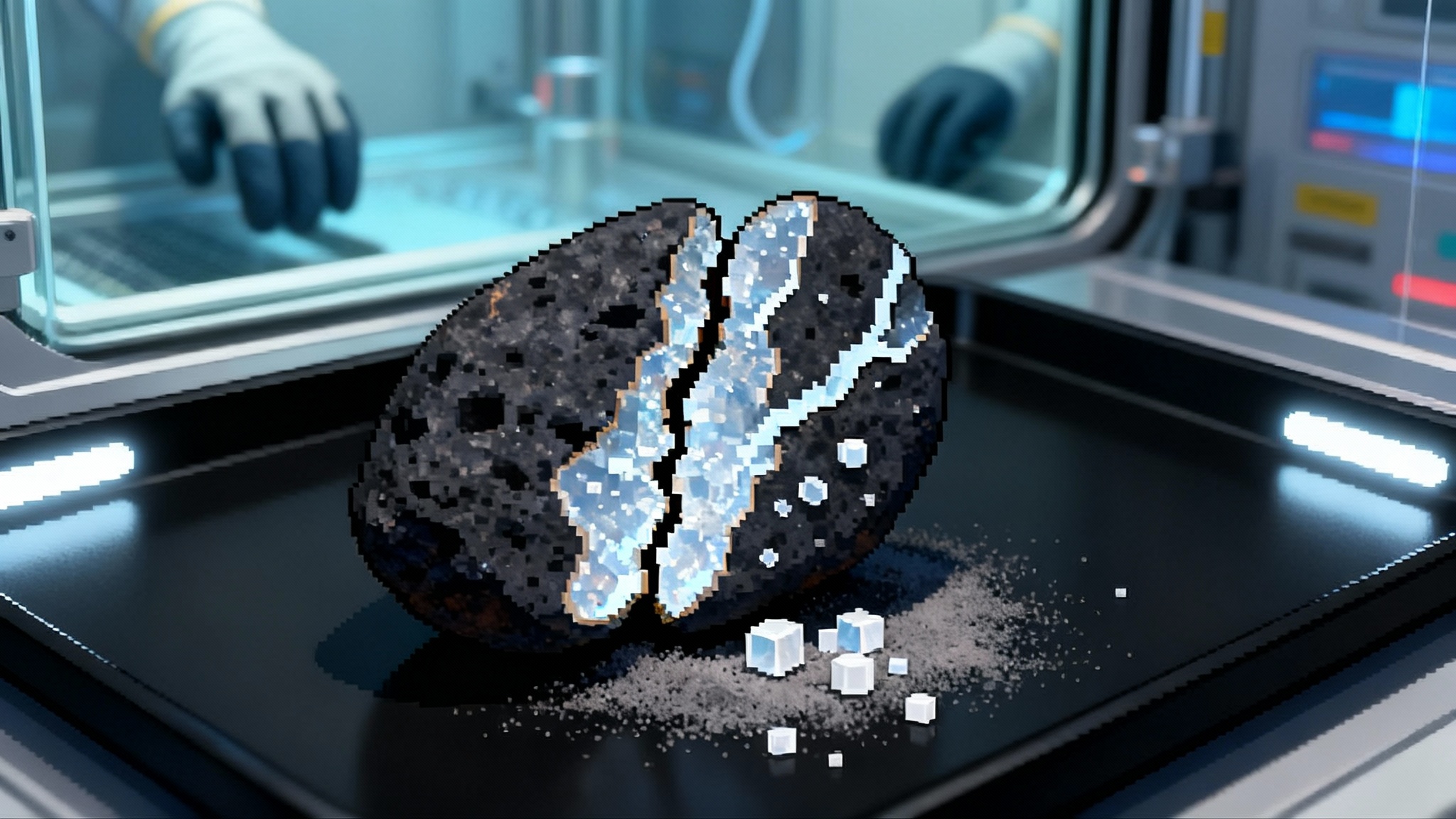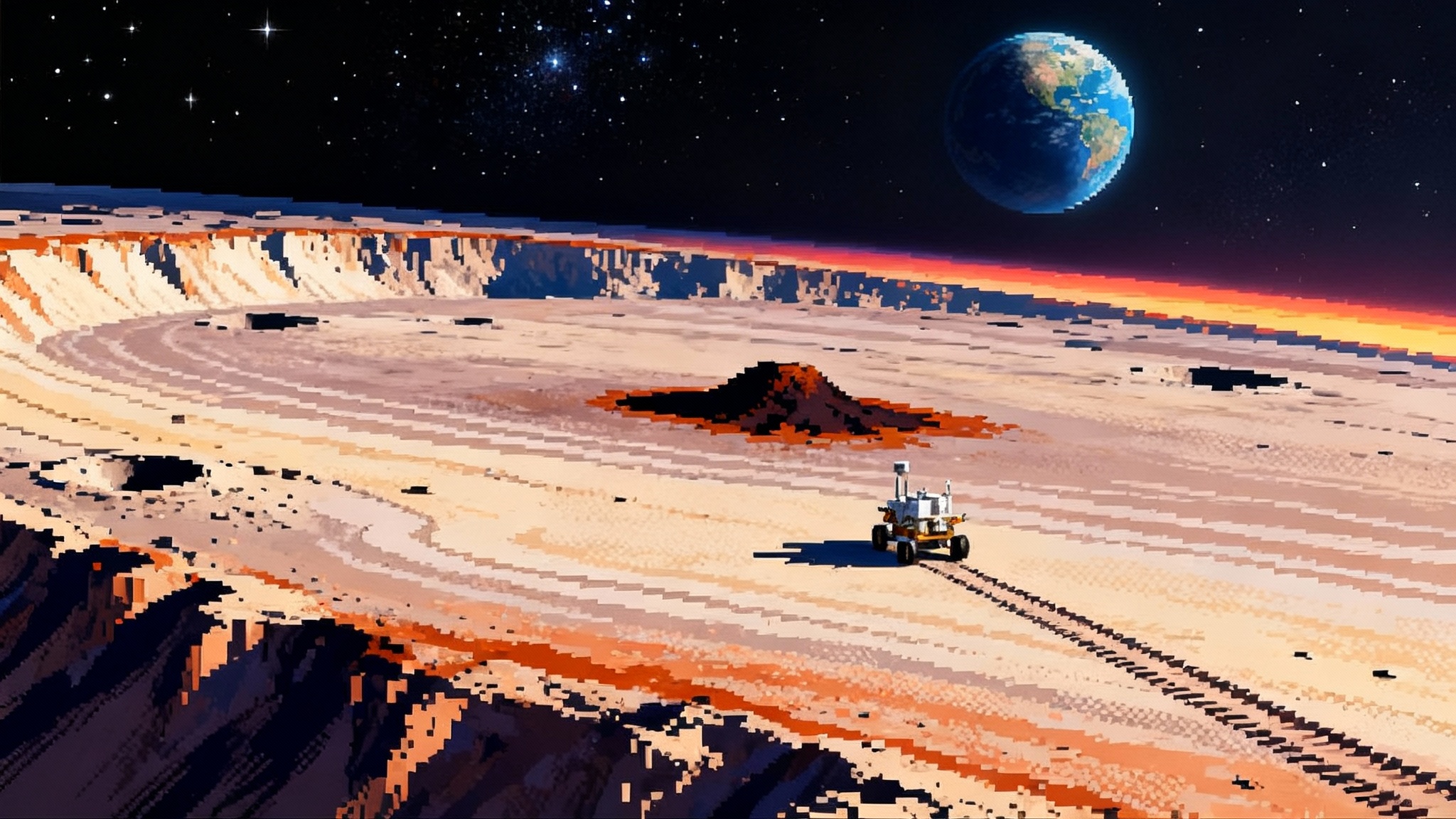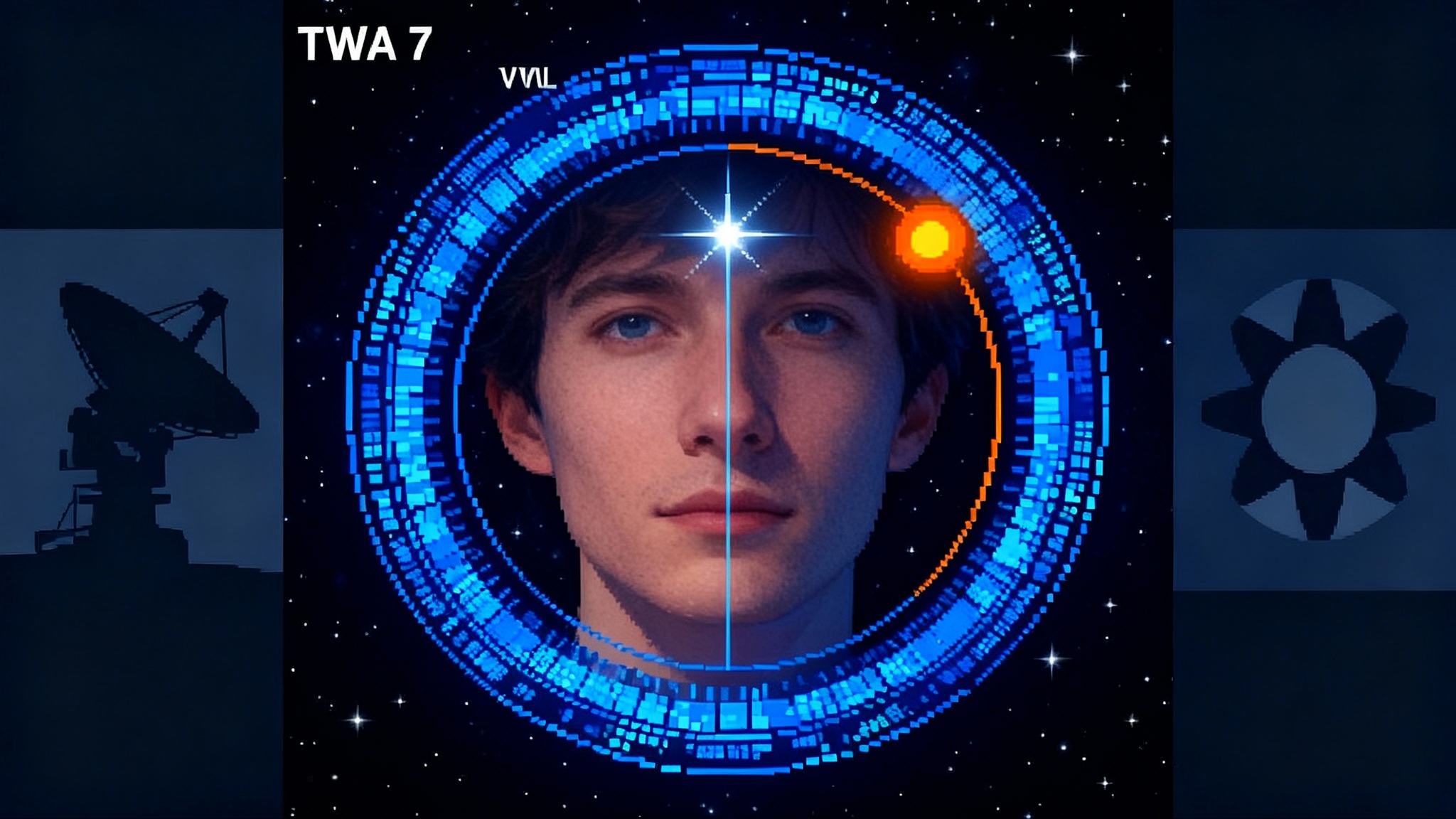Webb’s first planet image: TWA 7 b and the new roadmap
In June 2025, the James Webb Space Telescope’s MIRI coronagraph isolated a faint, orange point inside the debris disk of the young star TWA 7. If confirmed, the Saturn mass candidate TWA 7 b would be the lightest world ever captured by direct imaging. Here is how the detection works, how it will be confirmed, and why it accelerates the route to imaging Earthlike planets.

A small orange dot that changes the pace
In late June 2025, astronomers unveiled a compact orange speck in a coronagraphic image from the James Webb Space Telescope. The speck sits inside the debris disk of the nearby young star TWA 7, roughly 111 light years away. If the object is what the data strongly suggest, it is a Saturn mass planet, now nicknamed TWA 7 b, and it marks Webb’s first planet discovery by direct imaging as well as the lightest planet ever seen by this technique. For the core facts of the discovery, see NASA’s release on TWA 7 b.
This single result carries more weight than a one off detection. It shows that mid infrared high contrast imaging can reach down to sub Jupiter masses in young systems, right where theories predict planets are sculpting disks.
What Webb saw and why it matters
The target is an M dwarf called TWA 7, a roughly 6.4 million year old member of the TW Hydrae association. Its dusty debris disk is nearly face on, which makes rings and gaps stand out. Previous images from the Very Large Telescope’s SPHERE instrument traced three ring like structures in scattered light, including a narrow ring near 52 astronomical units.
Webb’s Mid Infrared Instrument, MIRI, used a coronagraph to block the star and suppress its residual glare. After careful subtraction with a reference star, a point source emerged about 1.5 arcseconds from TWA 7, spatially aligned with the disk and located in a gap between dust rings. The brightness and color at 11.3 microns fit a young, cold object with a mass near 0.3 Jupiter masses and a temperature near 320 Kelvin.
Why this is significant comes down to physics and instrumentation. At ages of a few million years, giant planets are still shedding formation heat. In the mid infrared they radiate efficiently, while the host star is relatively dim. MIRI’s coronagraphs, plus Webb’s extremely stable optics, deliver the contrast needed to reveal something as light as Saturn at separations of tens of astronomical units. Before Webb, direct imaging instruments typically cut off around a few Jupiter masses for similar separations.
How MIRI pushed the mass floor lower
Three ingredients made the difference:
- Thermal infrared leverage. A cold young planet emits most strongly around 10 to 15 microns. At those wavelengths, the planet to star flux ratio improves for low mass giants. MIRI’s F1140C filter at 11.3 microns hit that sweet spot for TWA 7 b’s predicted temperature.
- Coronagraph design and stability. MIRI’s four quadrant phase mask and Lyot stops, paired with Webb’s thermally stable segmented mirror, keep quasi static speckles in check over hours. Reference differential imaging with a well matched star removes the diffraction pattern down to contrasts of roughly 10⁻⁵ to 10⁻⁴ beyond about half an arcsecond.
- A pole on, structured disk as a guide. The SPHERE map of rings and gaps predicted where a low mass planet might sit. Finding the point source in that gap shifted the case from interesting blob to strong candidate.
A young system’s blueprint for sculpting
Planet formation leaves fingerprints. In TWA 7 the debris disk shows three main features: an inner ring peaking near 28 au, a narrow ring at about 52 au, and a broad outer structure beyond 90 au. The candidate planet sits in a gap associated with the 52 au ring. That geometry is what planet disk interaction models predict when a sub Jupiter mass object clears a modest swath and traps dust outside its orbit into a ring. The team even notes a tentative co orbital trojan dust concentration, which would be dust caught at stable Lagrange points.
This architecture matters for demographics too. A Saturn mass planet in a young M dwarf system at more than 50 au shows that disks around low mass stars can produce and retain cold giants far from the star, complicating simple narratives that M dwarfs host only small, close in planets.
From candidate to confirmed planet
The announcement is careful. TWA 7 b is a strong candidate, not yet fully confirmed. The confirmation recipe is straightforward and instructive.
- Common proper motion. Re observe with the same MIRI filter after a year or two. If the source shares the star’s motion, it is almost certainly bound.
- Multi band photometry. Add MIRI coronagraph filters at about 10.65 and 15.5 microns to measure color temperature and search for spectral features that would not match a background galaxy. Attempts with NIRCam coronagraphs will likely follow. Even a non detection there brackets the spectrum.
- Astrometry within the disk. With two or three well spaced epochs, small motion along the ring can be tested against the expected orbit in the disk plane.
- Low resolution spectroscopy. If contrast allows, MIRI’s integral field spectrograph could probe methane or CO bands. For a low mass, cool planet, even coarse spectral points would be a leap forward. For technical specifics on the observation and modeling, see the Nature analysis of TWA 7 b.
Why this bridges to Earthlike imaging
The physics differ from an Earth mass planet at 1 au, but the workflow lines up with where we must go next.
- Contrast techniques carry over. Coronagraphy, speckle control, reference star subtraction, and calibration are the same playbook that the Habitable Worlds Observatory will push to far higher contrasts. That culture of precision mirrors how surveys like Euclid’s first sky map transform broad questions into calibrated data products.
- Planet plus environment. Webb’s dot sits inside a structured disk. HWO will face planets embedded in dust and exozodiacal light. Learning to model disks and separate clumps from planets is a skill we need now, not later.
- Multi epoch discipline. Repeated visits to pin down orbits, colors, and consistency with dynamics are the habits that will confirm rocky planets. Operational lessons from missions such as Parker Probe’s 25th flyby lessons show how cadence and control translate into better science.
What to watch next from Webb and the ground
- A second epoch with MIRI coronagraphy. Repeat 11.3 micron imaging for common proper motion and refined photometry. A detection at 15.5 microns would tighten mass and temperature estimates.
- NIRCam attempts. Even a low signal or non detection helps constrain the spectral energy distribution.
- ALMA mapping of the disk. Sharper millimeter imaging can match ring widths and offsets to a specific planetary mass and test for trojan dust.
- Extreme AO on giant telescopes. As the ESO Extremely Large Telescope and other 30 meter class facilities come online, mid infrared instruments could add wavelengths and resolution.
How this shifts timelines and priorities
- Validates mid infrared coronagraphy as a planet finder for low mass giants in debris disks, justifying continued MIRI campaigns that target ringed systems with predicted planet locations.
- Emphasizes disk aware strategies and joint modeling tools that fit planets and disks together. Pairing thermal emission with scattered light maps is especially powerful.
- Strengthens the bridge to HWO by rewarding steady investment in deformable mirrors, low order wavefront sensing, ultra stable structures, and spectral post processing. Methodical, multi epoch campaigns are becoming the norm across planetary and astrophysics missions, from precision mapping to sample return, as seen in what the Bennu samples say.
The road to Earthlike worlds looks clearer now
Webb’s first directly discovered planet is not an Earth, and it is not in a warm inner orbit. Yet the way it was found, vetted, and interpreted is a rehearsal for the main event. Start with a prediction from disk structure. Capture a faint point in a coronagraphic image by managing contrast and stability. Return for common proper motion. Accumulate colors and spectra. Align everything with dynamics. The coming year should bring the first follow up checks on TWA 7 b’s motion and color. If those pass, we will have the first directly imaged planet embedded in a debris disk, the lightest ever seen this way, and a clear sign that our tools are ready to push harder.








